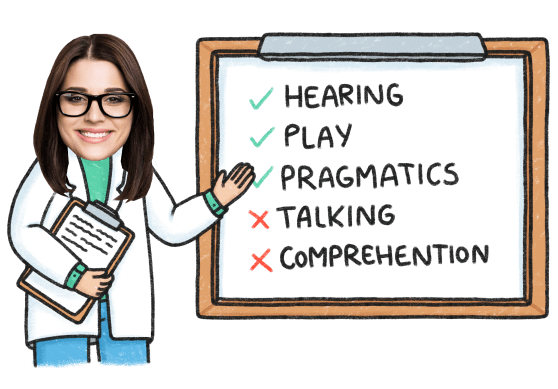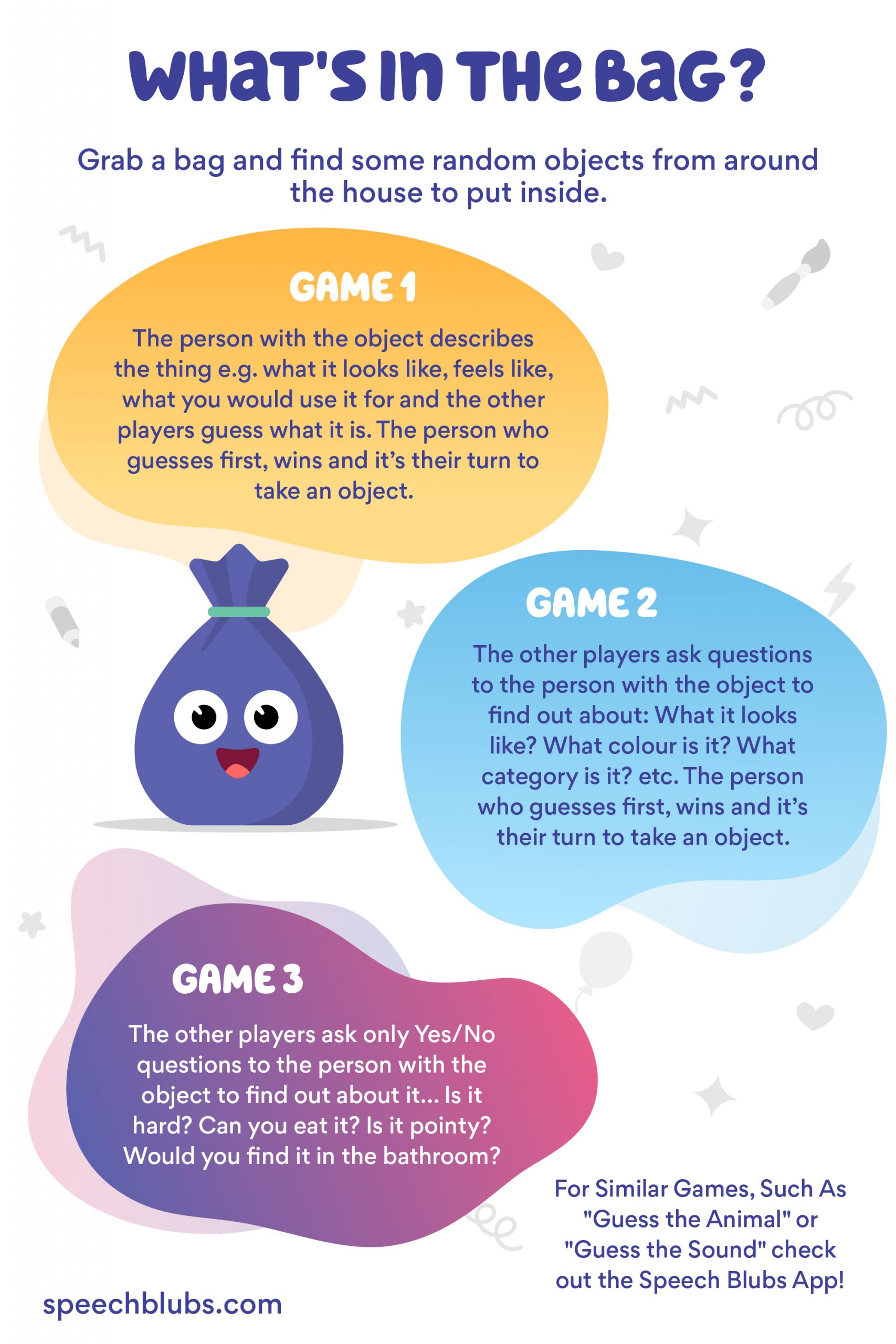Staying at Home and Developing Spoken Language
Jan 17, 2022 Many of us are now at home for the foreseeable future. Although this time will be a little different than what we are used to, it can be a time to be, play, and learn together.
As a therapist, I am constantly saying that “therapy is a daily, parent-led, home-placed task”… and therefore the current climate provides an opportunity to try something new and do some good while you stay at home.
Just like if we were learning a new language, learning how to communicate takes lots of practice and lots of repetition. This can be hard and boring especially for little people who love to play! So have a look at the list below and see if you can make a start and have some fun!
None of the games or activities below require anything fancy or expensive, and should use things you already have in your homes!
5 Toddler Activities to do at Home to Develop Spoken Language
1. Looking at Family Photos
Photos are a great conversation starter, and we all have many photos around either in albums or on our computers and phones. Have a look through photos with your child. Modeling simple language to your child helps them learn vocabulary and build sentences.
Point to things in the picture and pause to see if they have a word or sentence, if they do not model vocabulary/sentences for them. See a breakdown of examples below split into difficulty levels.
Easy Toddler Activity
Model single words and two-word phrases to name things in the pictures e.g. Mummy, Grandpa, dog, plane, yellow flower, Daddy’s hat, Sam running, Kate swimming, and Holly’s birthday.
Medium Toddler Activity
Model short sentences to describe what’s happening in the pictures e.g. splashing in the sea, Daddy eating pizza, baby throwing spoon, Grandpa sleeping on the sofa, and Katie riding her blue bike.
Advanced Toddler Activity
Ask questions about what is happening in the pictures e.g. Who is running? Where is the baby? What is daddy doing? How is Granny feeling? Why is Ben crying? and When do we blow out candles on a cake?
2. Narrating stories
Creating opportunities to tell stories is a fantastic way of supporting spoken language. Through stories children can access a much wider vocabulary than they would just speaking about normal life. See a breakdown of examples below split into difficulty levels.
Easy Toddler Activity
Read familiar stories with your children. Miss out/pause on key words in the stories and see if they can fill them in e.g. Mummy threw the ball too …, The children went splashing in the …, It’s time for …. and if they cannot fill in the gap, you can point to the pictures for support and then complete the sentence for them.
Medium Toddler Activity
Draw random objects on pieces of paper e.g. flower, car, crown, cow, wand, book, train, etc. and put them in a pot. Make up spoken stories with your children by picking out pictures to fill in the key details. This will create fun and silly stories that will be different each time even using the same picture e.g. The boy went to the shops to buy a …Cow!… The cow liked to eat… sausages! … The boy took the cow to the … train … and they travelled to the … moon! With older children you could create separate pots of pictures for objects, people, and places for them to pick from.
Advanced Toddler Activity
Mind map story ideas with your child. Come up with words to describe the “what,” “where,” “who,” “why,” “when,” and write them/draw them on a piece of paper. You can take turns using the mind maps to help tell the story verbally. Family members could act out the story as they tell it, you could record the story telling to listen to later or even film the acting out to watch back as a film.
For further games and activities for supporting narrative and asking and answering questions check out the Speech Blub App.
3. Creating creatures
Whether it is drawing them or building them out of craft bits and recycled packaging, creating new and exciting creatures is a fun way to explore new and unusual vocabulary. Together you can design a new creature to draw and/or build. When talking about it you can name different body parts and describe how it looks, moves, and its behavior using concepts, adjectives, and verbs. It’s a great way to get messy and creative while unlocking communication. See below examples of the language you might model split into difficulty level.
Easy Toddler Activitiy
- Noun examples – head, eyes, feet, tail, nose, hair, wings;
- Concept examples – big, small, red, blue, green etc;
- Adjective examples – hard, soft, long, short, fast, slow;
- Verb examples – run, walk, fly, sleep, eat, drink.
Medium Toddler Activity
- Noun examples – neck, claw, mane, feathers, fur, scales;
- Concept examples – dull, wet, dry, light, dark;
- Adjectives examples – furry, fluffy, sharp, sticky, hot, cold, smelly, bumpy;
- Verb examples – crawl, climb, slide, hop, bite, lick, smell, hide.
Advanced Toddler Activity
- Noun examples – fangs, talons, horn, nostril, paws, whiskers;
- Concept examples – quiet, loud, back, front, left, right;
- Adjective examples – webbed, wild, venomous, tame, poisonous;
- Verbs examples – prowl, hunt, burrow, snarl, hibernate, dive, claw, growl.
Boost Your Child’s Speech Development!
Improve language & communication skills with fun learning!

4. What’s in the bag
Grab a bag and find some random objects from around the house to put inside. Take it in turns to take something out of the bag and keep it hidden. Use the different game methods below to create fun and language-rich games.
Game One
The person with the object describes the thing e.g. what it looks like, feels like, and what you would use it for and the other players guess what it is. The person who guesses first, wins and it’s their turn to take an object.
Game Two
The other players ask questions to the person with the object to find out about: What it looks like? What color is it? What category is it? etc. The person who guesses first, wins and it’s their turn to take an object.
Game Three
The other players ask only Yes/No questions to the person with the object to find out about it . . . Is it hard? Can you eat it? Is it pointy? Would you find it in the bathroom?
- Easy object examples – apple, toy car, shoe, phone, cup;
- Medium object examples – glove, hair brush, TV remote, plate, potato;
- Hard object examples – tin of beans, spanner, sellotape, ruler, button;
- For forth games and activities such as “Guess the Animal” or “Guess the Sound” check out the Speech Blub App.
5. Barrier games
Using objects or pen and paper, barrier games are great for developing giving instructions and using descriptive language. You can set this up with a simple barrier between the two players at a table or on the floor using a propped up book or cereal box etc. On one side of the barrier the person has a setup of items/drawing. They have to describe and give instruction to their partner on how to make the other side match. See examples broken down into levels of difficulty below.
Easy Toddler Activity: Building Towers
Player one builds a tower out of bricks/lego. They then describe how to build the tower to their partner, e.g. “first a blue brick at the bottom, then a red in the middle, then a green on the top.” Their partner follows the instructions. Once finished remove the barrier and compare the towers.
Medium Toddler Activity: Arranging Toy Animals
Beforehand draw the same simple farm layout on two pieces of paper e.g. a field, a barn, a pond, and a house. The first player puts/draws their animals on different parts of the farm, they then describe which animals are where to their partner, e.g. the cow is in the field, the horse is in the pond, and the chicken is next to the house. Their partner follows the instructions behind the barrier until they are all done and then removes it to see it they match.
Advanced Toddler Activity: Drawing an Alien
The first player draws an alien using different colors without their partner seeing. They then have to describe the alien to their partner the best they can while their partner draws from the instructions, e.g. draw a big circle for the head, it’s got three eyes in the middle, four long legs, and one arm at the top of its head. Once finished, remove the barrier and compare the pictures.


